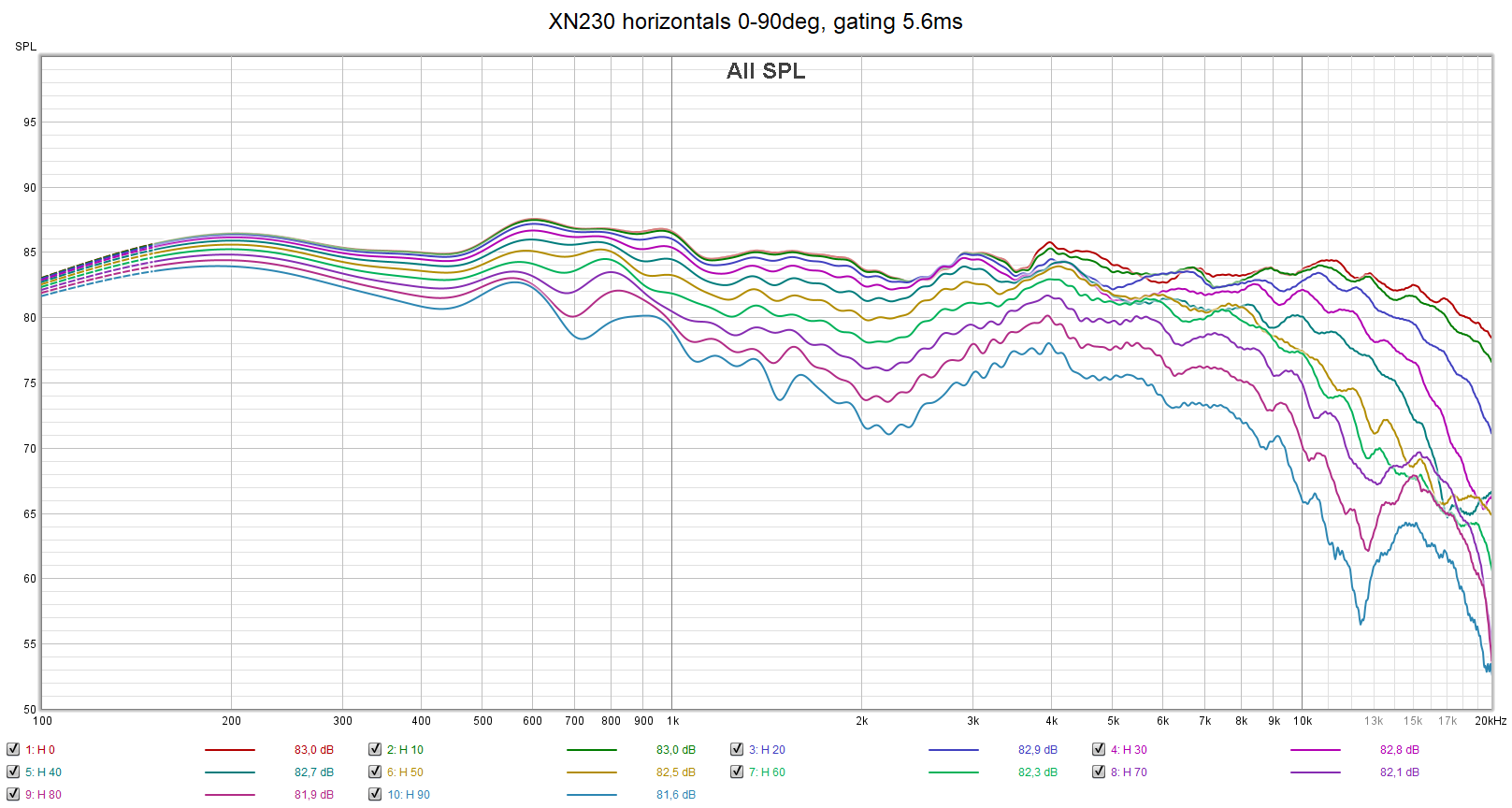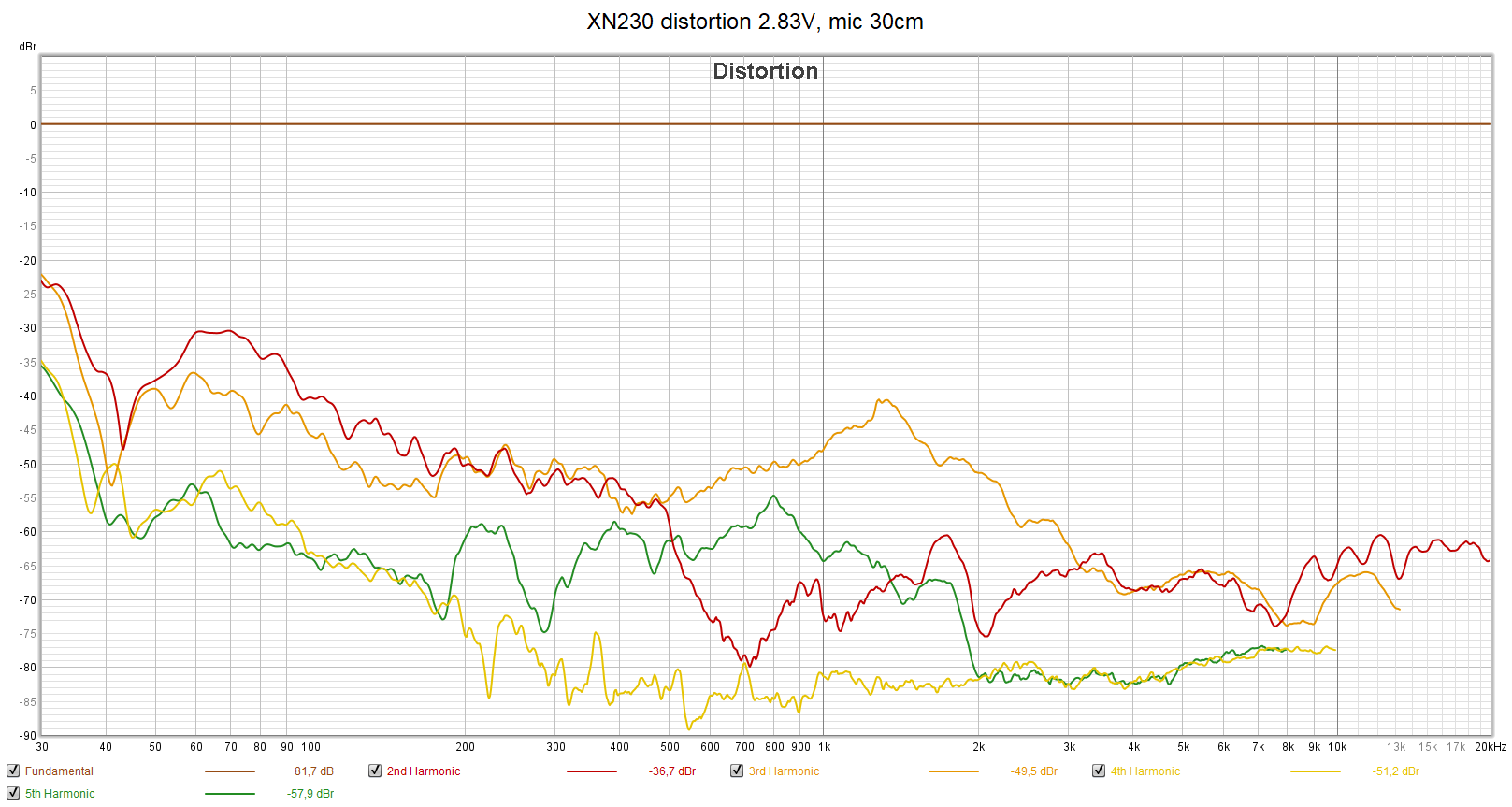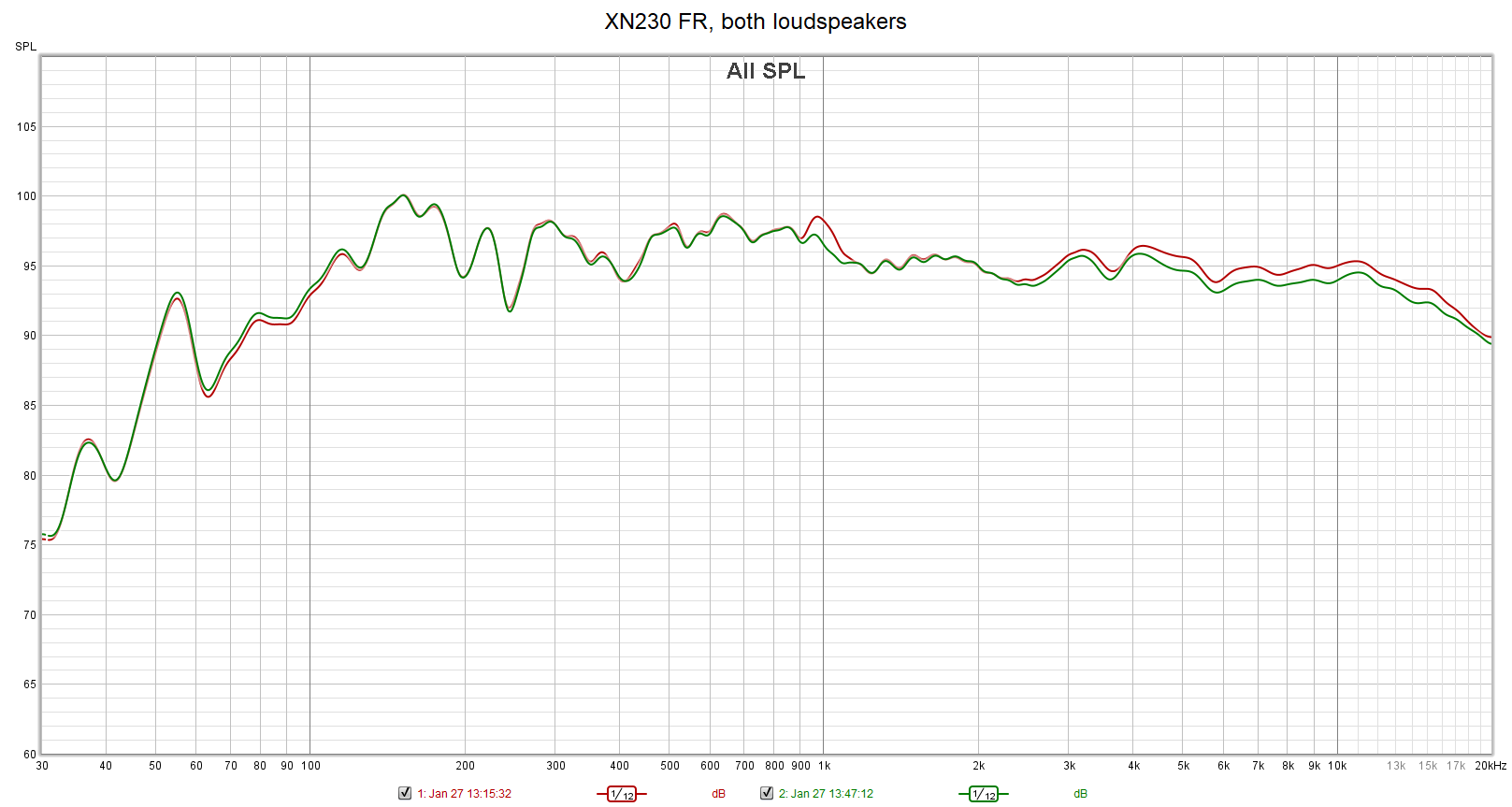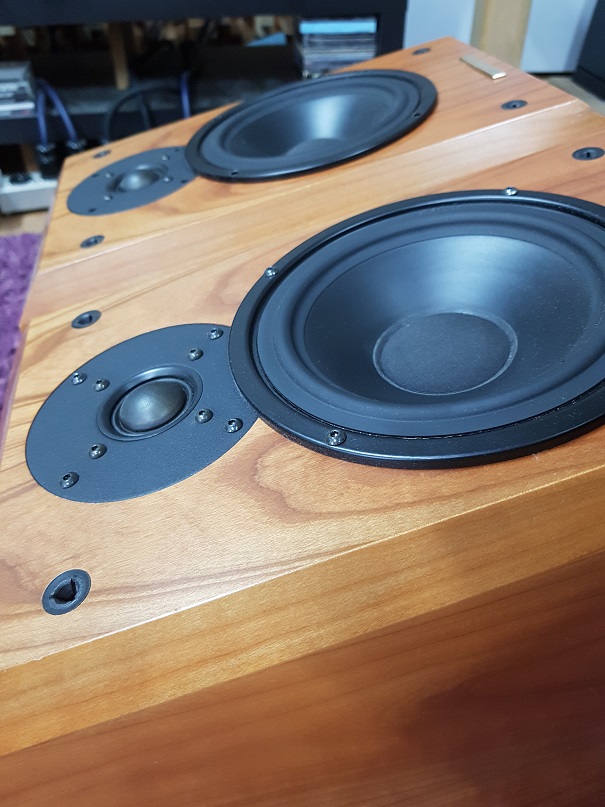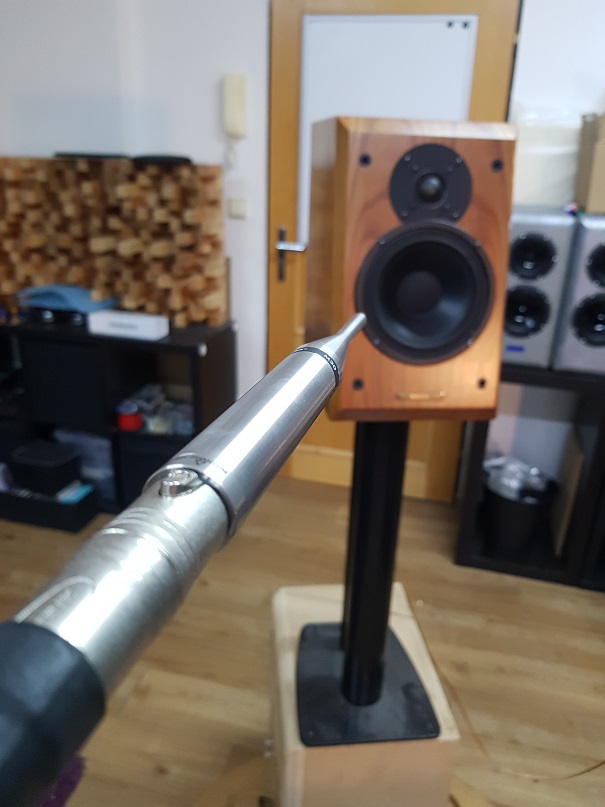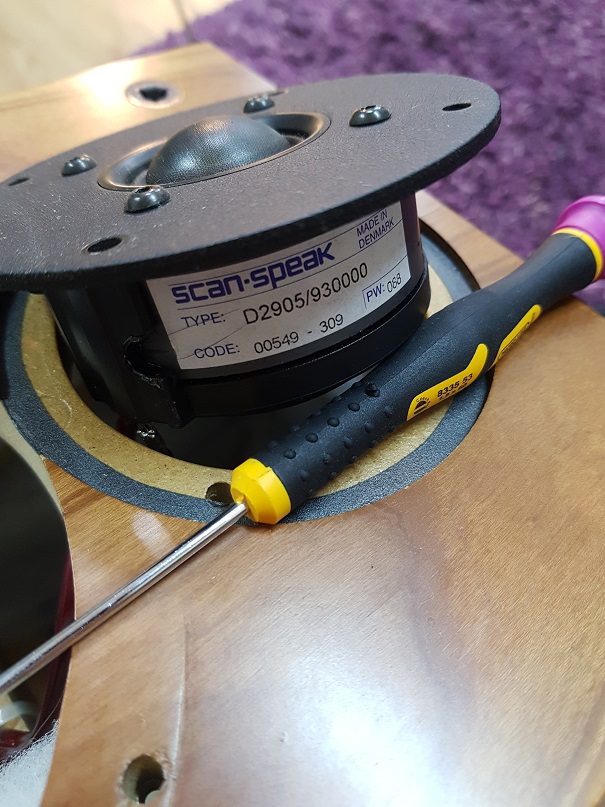
Xavian XN230
Speaker check and upgrade
This pair of XN230 got to my hands as the owner bought them from the second hand and wanted to perform the check to be sure they were still fine and measuring well and identical.
I always listen to the speakers first, and discuss the impressions with the owner to align the our findings and expectations. This time it took me some time before I could make the measurements, so I had several opportunitties to listen, sometimes focused listening, sometimes casual listening during other work. The basic characteristic of this loudspeaker is that these speakers are very easy to listen to. The sound is somewhat soft and mild, not harsh or bright at all, which is good, but on the other hand, they play all that way. There are no issues, the speakers are well designed, just the character is too soft and relaxed. This type of the sound is often called musical, but I think we should call it the right words. For me, musical means keeping the fidelity and key attributes of the music, like pace and rhythm, tonality, details, and also sometimes brightness or even harshness if it is the nature of the record or genre. To compensate this softness I would see those speakers powered by the amplifier with more firm and brighter character of the sound.
Original state measurements and findings
Mic distance for frequency response measurements was 50cm, and for distortion measurements 30cm. Mic was placed in the height between tweeter and the mid. SPL was calibrated and all measurements were SPL adjusted to represent 1m distance.
Off axis frequency responses were measured for standard set of the angles 0-90deg. Gating 5.6ms was applied, and I also included the graph with no gating, just smoothing 1/12. I prefer to look at the both views to get better overall picture.
FR measurements shows rather flat on axis response. Trebles above 10kHz are slightly tilted down, this is partially the feature of the tweeter (~2-3dB downtilt can be seen in the datasheet) and partially the impact of tilted baffle.
Off axis responses show quite typical 6"+1" pattern with the power response dip at 2kHz.
Crossover is basically well designed, we can see nice 6dB summation at Fc and also on both sides of Fc, which means good phase tracking in above and below Fc.
Sensitivity is ~85-86dB/2.83V/1m. Impedance is 8ohm nominal.
Distortion of the speaker is good as expected from the drivers of this cathegory. There is HD3 broad peak slightly above 1kHz, and this is likely the mirroring of the midwoofer breakup which would be around 4kHz. Measurements of separate drivers with the crossover show midwoofer peak at 4kHz so this quite confirms my assumptions. This Peerless midwoofer cone looks to be paper cone with coating, so breakup would not be sharp (high Q) and high, but rather broader, distributed and just few dB amplitude so nothing really serious. Datasheet curves for 832732 are on the picture below.
There are already Mundorf capacitors in the crossovers, they have nice sonic character, so there is no need to upgrade those. They were obviously installed additionally.
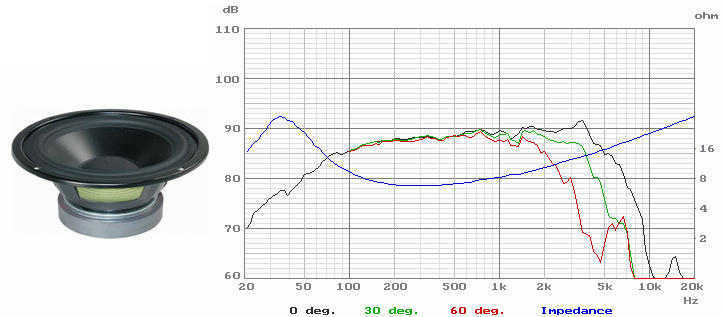
Measured impedances of both loudspeakers differ mainly in bass region, there is slight difference in Fs of the midwoofers. This looks to be just few Hz difference, no issue at all. Small wrinkle at 350Hz is likely related to the height of the loudspeaker.
From the measurements below and the listening impressions I see following opportunities for the improvements:
- to fill in the power response gap at 2kHz.
- to lift a trebles by ~1dB.
- to suppress midwoofer breakup at 4kHz with small cap (~560nF) across main coil in midwoofer crossover.
- and I was surprised to see good quality caps (Mundorf EVO Aluminium Oil) in tweeter crossover, obviously installed additionally, not original parts.
